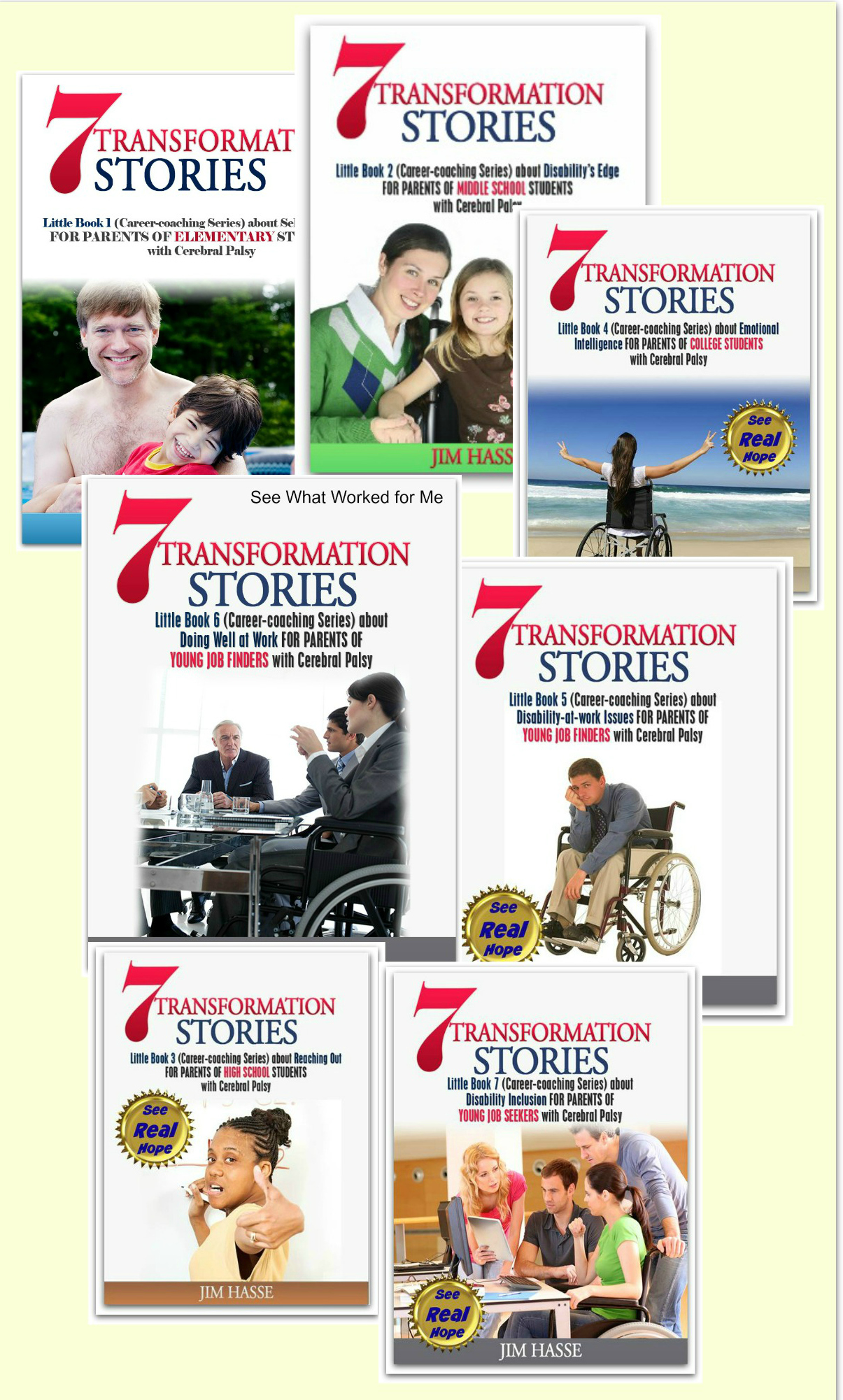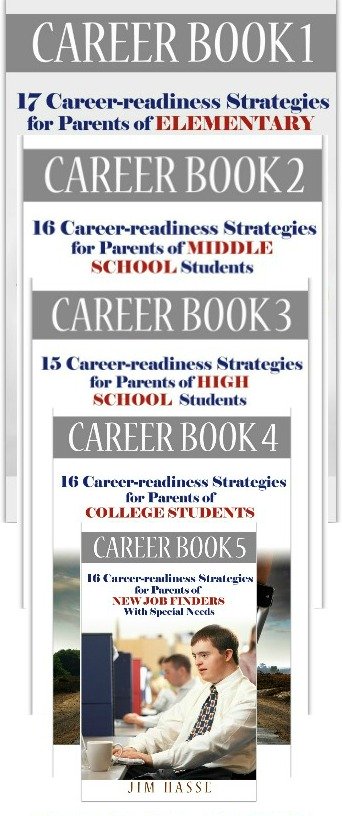Motivation Plan: Cerebral Palsy Career Builder for High School Students
By Jim Hasse, ABC, GCDF, Disability Employment
Expert
______________________________________________________
Here is a motivation plan for your youngster with cerebral palsy (CP) who is in high school and is looking for that first part-time job.
He or she is excited about “getting out into the real world.” Yet, you notice a degree of apprehensive in your high school student because he or she doesn’t know, perhaps for the first time, what’s going to come next.
The days and weeks may slip by with no tangible success in landing that “dream job” for the summer or for the semester. How can you help your youngster to keep trying (and always be positive) when he or she is getting no response or outright rejection by employers?
Such a situation can be particularly daunting when CP is involved as an extra barrier to employment. As a person with CP, I know that “sinking feeling” when nothing seems to give the edge you need to break into “mainstream” employment, even at a part-time level.
The good news is that, after looking back on 45 years of employment, I recall mostly the bright spots in my career -- when things did seem to work well for me in the long run. The “dark days” and all the extraordinary effort it often takes to start (and build) a meaningful career as a person with CP seem to fade in my memory.
I now believe that your youngster’s dark days don’t have to be so dark, if you help him or her to remain open to adopting a motivation plan. That means pursuing some of these seven ways to battle discouragement while landing that important first-time job during high school:
- Form
a mentorship
- Form
a mastermind group
- Volunteer
with a purpose
- Become
job market savvy
- Think
of the job hunt as an adventure
- Document
success
- Feed a network
I’ll explain below what I
mean by each of these elements of a motivation plan for your youngster.
Join the PACER Facebook discussion:
What
motivates your high school student
to battle disability employment barriers?
 Illustration courtesy of 31dayweightlossplan.com.
Illustration courtesy of 31dayweightlossplan.com.Form a mentorship
Become a mentor (instead of a “mom” or “dad” or “uncle” or “aunt” or “grandma”) for your youngster. Meet in person on a routine basis. If meeting in person is not possible, rely on Skype e-mail and text chat for one-on-one communication.
As a mentor, you should be able to level with your youngster on an adult level
and honestly tell him or her when things look like they’re going well -- and
when they’re not -- in coping with the part-time search. You are the key to making this motivation plan succeed.
Form a mastermind group
Encourage your youngster to form a mastermind group with at least two other fellow job seekers, perhaps students from the same high school. A mastermind group is simply an alliance of two or more individuals dedicating themselves to a specific goal – in this case getting temporary work.
The key to creating a successful mastermind group is for group members to agree on a set of rules or guidelines that assure the continued success of the group.
Two rules stand out above all others. They are: Show up for your meetings or calls and participate with an attitude of, “How can I be of service to the other members of my group?”
When your youngster commits to supporting a mastermind group, the very best
thing he or she can do is show up for the
call or meeting. One person’s absence from the group will significantly change
the dynamics of the group.
Your youngster’s attitude should never be, “Here’s what I need.” A mastermind group is based on unconditional service to others within the group. By supporting others in the group, your youngster will receive support.
This does not mean you your
youngster goes to a mastermind meeting with the thinking, “There’s nothing I
need help with. I’m only here to help you.” Being vulnerable and open to
suggestions is part of the mastermind process.
Volunteer with a purpose
Encourage your youngster to volunteer doing work he or she intend to pursue as a career. If she’s into accounting, urge her to volunteer to help a non-profit with its accounting work. If he wants to be a teacher, encourage him to volunteer as an aide in one of your local schools.
Your youngster needs to select volunteer work carefully, choosing situations in which he or she has a clear job objective, clear guidelines and a clear understanding of expected results and how work will be evaluated in terms of performance.
Within those parameters, your youngster will more easily be able to cite his or her volunteer work experience as a significant qualification for a specific part-time job during interviews.
Gaining needed work experience through volunteering can be an important driver within any motivation plan.
Become job market savvy
Encourage your youngster to become knowledgeable about his or her particular field as well as the labor market in general. Talk about what your youngster is finding.
About 30 years ago (before the Internet), I became very familiar with the jobs available in my field, the qualifications employers were seeking and the salaries being offering by studying the want ads in major newspapers and professional periodicals and networking (in person) with people in my field at national conferences and local association meetings.
That was part of my motivation plan.
Think of the job hunt as an adventure
Your youngster can approach this first job hunt as a research project for exploring what works and what does not work in terms of results. That means charting findings and progress and sharing those with family and friends, who can become the “cheer and support” group within your youngster’s motivation plan.
To do that, your youngster needs to set up a system (perhaps using a simple spreadsheet) for recording the date, time and nature of each initiative he or she takes as part of the job search, noting results.
Over time, your youngster can focus efforts on the marketing channels (which social media, for instance) are giving the best results. That means he or she is continually refining the job marketing campaign.
Show your youngster that sharing results with significant others in a network will keep those network members engaged in his or her job marketing campaign.
It worked for me. I landed my first job through a recommendation from my uncle.
Document success
Encourage your youngster to keep a diary about what he or she is learning about the job hunting process and about his or her personal growth as a job seeker. Reviewing those accounts of success regularly will set a job marketing pattern early on, and that will be helpful later in making the transition from school to work.
Sharing success stories now with family and friends and
periodically tweaking them will eventually help your youngster become comfortable
recounting them in job interviewers when appropriate.
Feed a network
People close to your youngster want to see him or her succeed, and they’ll help, if they know what they can do to help. So, keep extended family members involved and give them up-to-date information about how the job hut is going through e-mail, social media etc.
Most of all, give them the tools they need to highlight your youngster’s availability in their conversations with others. That means always giving them easy access to your youngster’s resume, online portfolio and wish-list of employer contacts.
Bottom line: Your youngster doesn’t have to be alone in his or her job search. In fact, trying to do it alone can be disastrous because “doing it yourself” is not a motivation plan.
Instead,
help your youngster use his or her personality and insight to engage others in
finding that first part-time job.
Join the PACER Facebook discussion:
What
motivates your high school student
to battle disability employment barriers?
Return
from Motivation Plan to Part-time jobs
Go
to Cerebral Palsy Career Builders
By Jim Hasse, ABC, GCDF, Disability Employment Expert
_________________________________________________________
This is Creative Commons content. You can freely and legally use, share and repurpose it for non-commercial purposes only, provided you attach this sentence and the following attribution to it (including the two links):
Originally written and illustrated by Jim Hasse, ABC, GCDF, owner of Hasse Communication Counseling, LLC, who, as a person with cerebral palsy, served for 10 years as a vice president in a Fortune 500 company during his 29-year career in corporate communication. He’s an Accredited Business Communicator, certified as a Global Career Development Facilitator and author of 14 Amazon books about disability awareness and disability employment issues.





